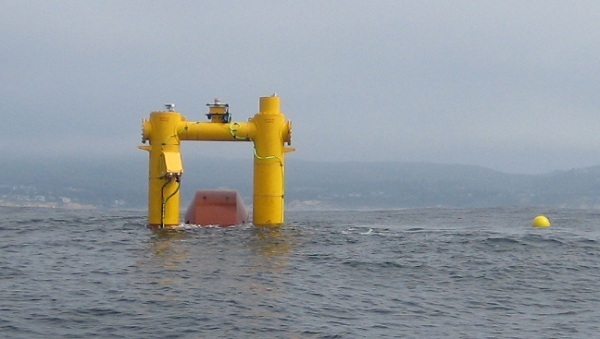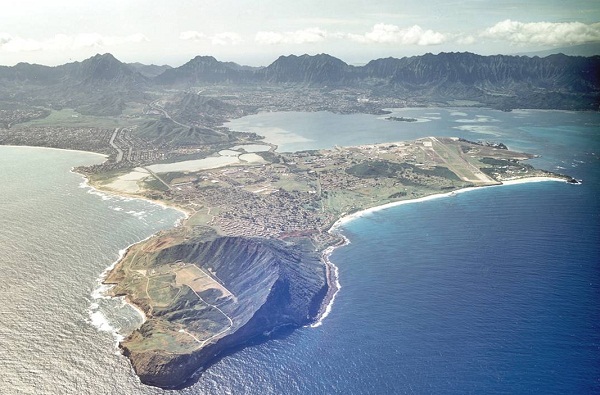WET-NZ, the wave energy converter that became the first such device to plug in to a new test buoy off the Oregon coast in late August, will soon move on to Hawaii for a full year of testing after winning a competitive funding grant from the U.S. Department of Energy.
WET-NZ was born in New Zealand, then developed into a second-generation, half-scale device in Oregon with Northwest Energy Innovations (NWEI) of Portland leading the project. The Oregon effort was funded largely with a $1.8 million DOE grant.

In the long run, devices such as WET-NZ will need to be able to survive the often wild wintertime conditions in the Oregon surf, but there was never any thought of testing this iteration of the device through this winter. It will be come out of the water any day now, as will the Northwest National Marine Renewable Energy Center test buoy, called Ocean Sentinel, that it has been connected to.
At the industry-wide Ocean Renewable Energy Conference in Portland last week, NWEI said the chance to gain another year of data made the yearlong Hawaii test opportunity a sought-after option. Plus, said NWEI’s Justin Klure, “the wave climate is a little softer in Hawaii.”

“Twelve-foot swells make me nervous,” Klure went on, only partly joking, it seemed. “I’d hate to have to check my Internet connection every morning to see if 60-foot swells were on the way.”
The WET-NZ is in a class of wave devices known as “point absorbers.” As the U.S. Bureau of Ocean Energy Management explains, “A point absorber is a floating structure with components that move relative to each other due to wave action (e.g., a floating buoy inside a fixed cylinder). The relative motion is used to drive electromechanical or hydraulic energy converters.”
Northwest Energy Innovations says one aspect of the WET-NZ that makes it special is the ability of its float to rotate continuously and also oscillate back and forth. This allows the device to extract energy from both types of motion, the company says, while also making it less likely to be “over-stressed at the extremes of motion – an issue that has caused other wave energy technologies to suffer hydraulic ram failures … because by design they have to restrict the float motion with end-stops.”
In Hawaii, WET-NZ will benefit from a testing opportunity that had started as a Navy program, but then was superseded with a $500,000 grant from the Department of Energy. The yearlong test will take place at the Navy’s Wave Energy Test Site off of Marine Corps Base Hawaii in Kaneohe Bay, on the island of Oahu.
The DOE said in announcing the funding opportunity that it expected “to select a proposed wave energy device that is substantially complete and ready for testing and data collection without significant modification.” WET-NZ fits the bill; Klure said in an email that “no major modifications of the device were planned” before it heads to Hawaii. He said the hope is to move the device before the end of the year.
As for how the device fared in Oregon, Klure said, “Objectives have been met and test has gone according to plan.”